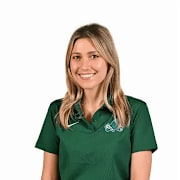Indiana Football Introducing New NIL Program for Fans and Student Athletes

Athletic departments are frantically preparing their college football programs for a new era of name, image, and likeness due to the impending final approval of the House v. NCAA settlement.
Indiana Hoosiers football is the latest program to signify its commitment to NIL under revenue sharing — specifically, funding the $20.5 million it will be allocated to share among athletes on July 1 in full.
As the Indy Star reports, Indiana athletic director Scott Dolson detailed his “comprehensive plan” to fund the notable expense in a phone interview with The Herald-Times.
“We’re committed,” Dolson told The Herald-Times. “You have to be.”
The introduction of a personal seat donation (PSD) program for football season tickets starting in 2025 demonstrates the program's commitment.
Departments can find new sources of revenue for funding, in addition to cutting back expenditures to increase budgets. The Hoosiers have eliminated 25 positions and have a goal to decrease operating expenses by 10% from each of its auxiliaries, which include compliance, academic services, and communications.
The PSD program, in contrast, introduces a revenue stream to offset cutbacks.
Dolson sent out an email on Jan. 23 to inform Indiana fans about the new program.
New and returning season ticket holders, beginning in 2025, will now have to make a mandatory seat donation based on the area of the stadium, upwards of $250 total per seat.
Importantly, the email noted that portions of Memorial Stadium seating will not require a donation, keeping the situation ultimately affordable.
The efforts come on the heels of a record season for the Hoosiers, who finished 10-0 for the first time in program history in 2024, awarding them their first-ever appearance in the College Football Playoff.
It was an impressive feat under head coach Curt Cignetti in his first season. The fan base responded with a roar, setting a new attendance record and selling out their final four games at Memorial Stadium.
The idea of seat donations or mandatory contributions for season tickets is not new, but the rejuvenation of the football program translated to invested fans. Dolson hopes fans can see that Indiana has a place in the current era of sports with success.
“I think we’ve been able to adapt ever since NIL started and different things came our way,” Dolson said. “We’ve played our cards as best we can, and this is another step.”
It’s something the department believes will generate $2.5 to $3 million annually, though it was a decision Dolson struggled with implementing.
Eventually, Dolson worked with their senior assistant athletic director for ticket operations, director of the IU Varsity Club, and deputy director of athletics and COO to join the 14 other Big Ten schools that have similar programs to PSD.
The quartet did an analysis of historical ticket data against other Big Ten markets with the intent of creating a PSD program that is profitable but remains affordable for the fan base.
"All these decisions are tough,” Dolson said. “We really have to spend hours and hours wringing our hands over to decide what the right move is. We love the strong family atmosphere at Memorial Stadium, and we want our long-time fans to still enjoy games. We don’t want to price anybody out.”
Dolson said that the program does not intend to introduce PSD to men’s basketball, distinguishing them from some conference opponents.
Football is ultimately the center of focus in revenue sharing, as evidenced by Indiana’s plans to add a new premium seating area called the East Side Club. Last year, the program added eight rooftop suites.
College football programs nationwide must weigh the complex advantages and disadvantages of revenue sharing.
Along with the new model comes difficult decision-making for athletic departments about where to generate resources. The goal lies between retaining talent on the roster with enough revenue and not taking actions that alienate fans and support.
Through careful analysis and implementation of the PSD program, the Hoosiers will keep ticket prices in 2025 in the lower third of Big Ten members while generating millions in annual revenue.
